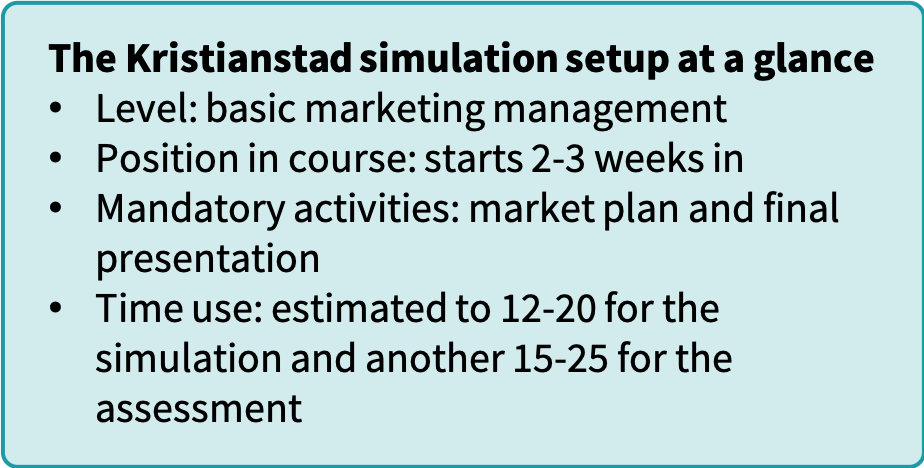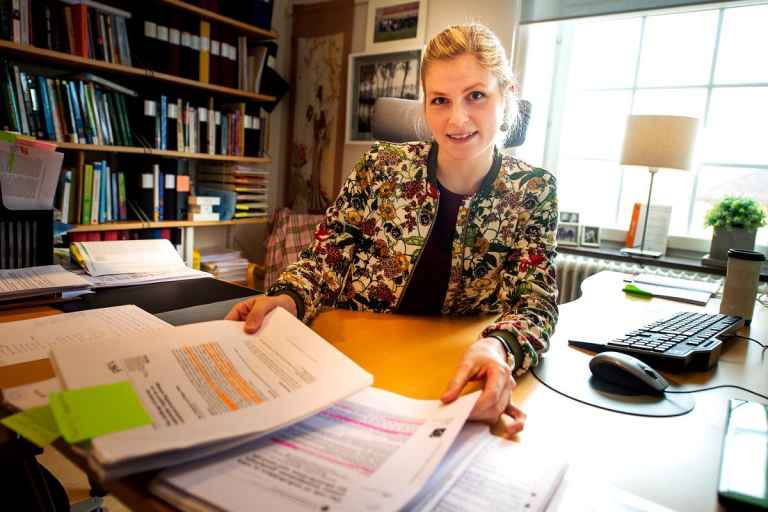
How Kristianstad University develop market plans in Hubro Marketing
This use case is a master class in how you can make Hubro Marketing Simulation a cornerstone of your marketing management course.
 Students’ learning outcomes from simulations are greatest when it is well integrated with the course.
Students’ learning outcomes from simulations are greatest when it is well integrated with the course.
One of our most well-integrated use cases is from the University of Kristianstad in Southern Sweden. They use the simulation in their Marketing and Organization course – the very first course that their students take at the university.
- The simulation is a great way to start their education, because students work together in small groups. The strategic conversations that follow are a great way to get to know each other, explains Lisa Källström, who is responsible for the course.
Lisa had used other simulations for several years prior to using Hubro Marketing Simulation. She believes  simulations play an important role in the students’ education:
simulations play an important role in the students’ education:
- It shows the students that what they learn is relevant and important also in the business world. Understanding the relevance outside academia motivates the students to move beyond superficial knowledge and to actually learn why, when and how theoretical models are helpful.
The setup
Lisa has designed a comprehensive setup which is well aligned with the learning goals of the course and the study program.
- We introduce the simulation two-three weeks into the course. We will let the students simulate 10-12 quarters a period of roughly two weeks.
The setup has the following progress plan:

A strong attribute of the setup is that it has many arenas for dialogue. By facilitating discussions with the students, educators can help them link their own simulated experiences with the syllabus. Lisa does this masterly by engaging on different levels throughout the simulation: she is an active advisor in the first simulation session, but takes a more passive support role in the next sessions. Then she’s active as a sparring partner in the tutoring sessions, where they discuss strategic issues and answer question.
How is the simulation part of assessment?
- After the simulations we have a day with final presentations, where the students present their company, the strategic decisions and evaluate how it went. The students then use their companies to write a marketing plan, which is used as examination.
What was the feedback from the students?
That it was fun! But also that they learned a lot, and that they would act differently and make other decisions if they could redo the simulation. This means they have learned something during the simulation, and I see it as great feedback!
What would you say to an educator that teaches a similar course? Would you reccommend this setup?
The marketing simulation is a great tool for basic marketing courses. Students get to use the models and concepts and it creates the engagment neccessary for students to learn. For sure I would recommend the simulation!
Book a free trial meeting to see how it works
Get a free trialExplore more of our blog for business education, educational business simulations and remote teaching methods.
Back to the blog